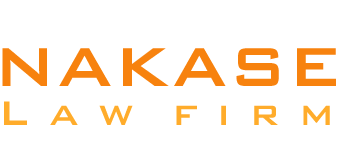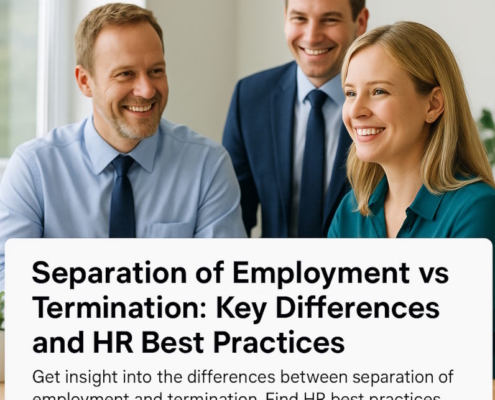What does the FMLA do?
All federal, state, and municipal government agencies as well as private companies with fifty or more workers are obligated to provide their employees with up to twelve weeks of unpaid leave per year under the Family and Medical Leave Act (FMLA). This leave is available to those who have just given birth, are seriously ill, or are caring for a loved one who is seriously ill.
The leave in question must be “job-protected,” meaning that upon completion of the absence, you must be eligible for either a return to your previous position or an equivalent arrangement. Additionally, these companies must maintain your group health insurance coverage while you are out on FMLA leave.
Which employers are covered by the FMLA?
All levels of government, including state and federal agencies, as well as local educational institutions (schools) and businesses with fifty or more workers are covered under the Family and Medical Leave Act (FMLA).
Who Can Apply?
The following are requirements to qualify for FMLA benefits:
- Work for a company that is covered by the FMLA
- Have worked for the company for a minimum of twelve months (or one year)
- Have put in a minimum of 1,250 hours of work in the twelve months before the start of the leave
- Work for an organization with 50 or more employees located within 75 miles of your workplace
Which situations qualify for unpaid leave under the Family and Medical Leave Act (FMLA)?
For qualifying family and medical reasons, an employee is eligible for up to twelve weeks (or three months) of unpaid, job-protected leave every calendar year under the Family and Medical Leave Act (FMLA):
- You are a new parent who must attend to the needs of your newborn.
- One of your children is a foster or adoptive child.
- You have a responsibility to take care of a parent, spouse, or child who is very sick.
- Your health is critical, and you must take time off from work to attend to it.
- Your immediate family member is serving in the military, either as an active duty service member or a member of the National Guard or Reserves, and you have “qualifying exigencies” (items that must be taken care of promptly) due to their deployment.
In the event that you or a member of your immediate family is currently serving in the military (including the National Guard or Reserves) and suffers a serious injury or illness, your employer is required to grant you up to 26 weeks (or 6.5 months) of unpaid leave within a 12-month period. This benefit is available to eligible employees.
In the event that you and your spouse are both employed by the same company, you are each limited to 12 weeks of leave (or 26 weeks if the leave is to care for a covered service member who has a severe injury or illness).
For people who just had a baby or have adopted or foster children living with them, they can only take their leave within 12 months of the date their baby was born or their adoption or foster placement.
Taking leave in multiple blocks may be permissible under certain circumstances, provided that the leave is for a single purpose. A person undergoing regular cancer treatments, for instance, may plan to take time off incrementally. You can still keep working, but you can use your FMLA leave to reduce the number of hours you work each week or day.
If you have any paid sick or vacation time that you may use before or during your FMLA leave, you might want to use it instead of the unpaid FMLA leave.
What counts as a very serious health issue
A “severe health condition” is defined under the Family and Medical Leave Act (FMLA) as an impairment, sickness, or accident that causes at least one of the following types of absences:
- You’re receiving care as an inpatient.
- A “period of incapacity” follows inpatient treatment, during which time you may find it difficult, if not impossible, to perform even the most fundamental tasks of your job, go to class, or care for yourself.
- As part of your inpatient therapy, you will receive follow-up treatment.
- You undergo medical treatment for a condition that prevents you from working for more than three days in a row, regardless of whether those days are work-related or not.
- You receive the treatment twice or more in a 30-day span or it is a “continuous” treatment, which may include medication or physiotherapy.
- During pregnancy or prenatal care, you receive ongoing treatment.
- For a chronic, life-threatening illness, you get continual treatment that lasts a very long period; demands at least two annual trips to the doctor; may include periods of incapacity, when you are unable to carry out daily tasks or your job adequately
- If you’re unable to work for an extended period of time due to a medical condition that currently has no cure, you may be required to undergo continuous therapy.
- You get more than one treatment for reconstructive surgery.
- Because your condition is likely to render you weakened if left untreated for longer than three days, you receive therapy for it.
Maintenance of Medical Insurance Coverage
During your Family and Medical Leave Act (FMLA) leave, your employer is required to maintain your health insurance coverage, if you had it before you took the leave. Even while you’re away, you’re still responsible for covering some of the expense.
Getting Back on the Job
Returning to work after an FMLA leave is a requirement of the policy. If your current position is not available, you are entitled to a new one that offers same compensation and benefits. You shouldn’t have to worry about losing whatever benefits you had accrued prior to taking FMLA leave.
Notifying Employers of a Need for Family and Medical Leave Act (FMLA) Leave
Notify your employer at least thirty days (1 month) before you anticipate needing FMLA leave. Give your employer the heads up as soon as possible if you anticipate needing leave in less than 30 days. You should notify your employer without delay if you need to take time off for an unexpected reason. You should also make an effort to adhere to your employer’s standard procedure for requesting time off if at all feasible.
You must provide your employer with sufficient information when requesting FMLA leave so that they can determine if the policy applies to your situation. Some examples of such information include being unable to work due to a medical condition (such as being pregnant or having spent the night in the hospital) or receiving ongoing medical treatment (either for yourself or an eligible family member).
Recording the Reason for Your Leave
Your employer may request medical certification when you request leave due to a serious illness, either for yourself or a family member. The employer has the option to seek a second opinion from a different healthcare provider regarding the ailment, provided that the employer covers the cost.
The FMLA’s Protections
It is against the law for an employer to terminate your employment, treat you unfairly, or prevent you from exercising your rights under the Family and Medical Leave Act (FMLA).































